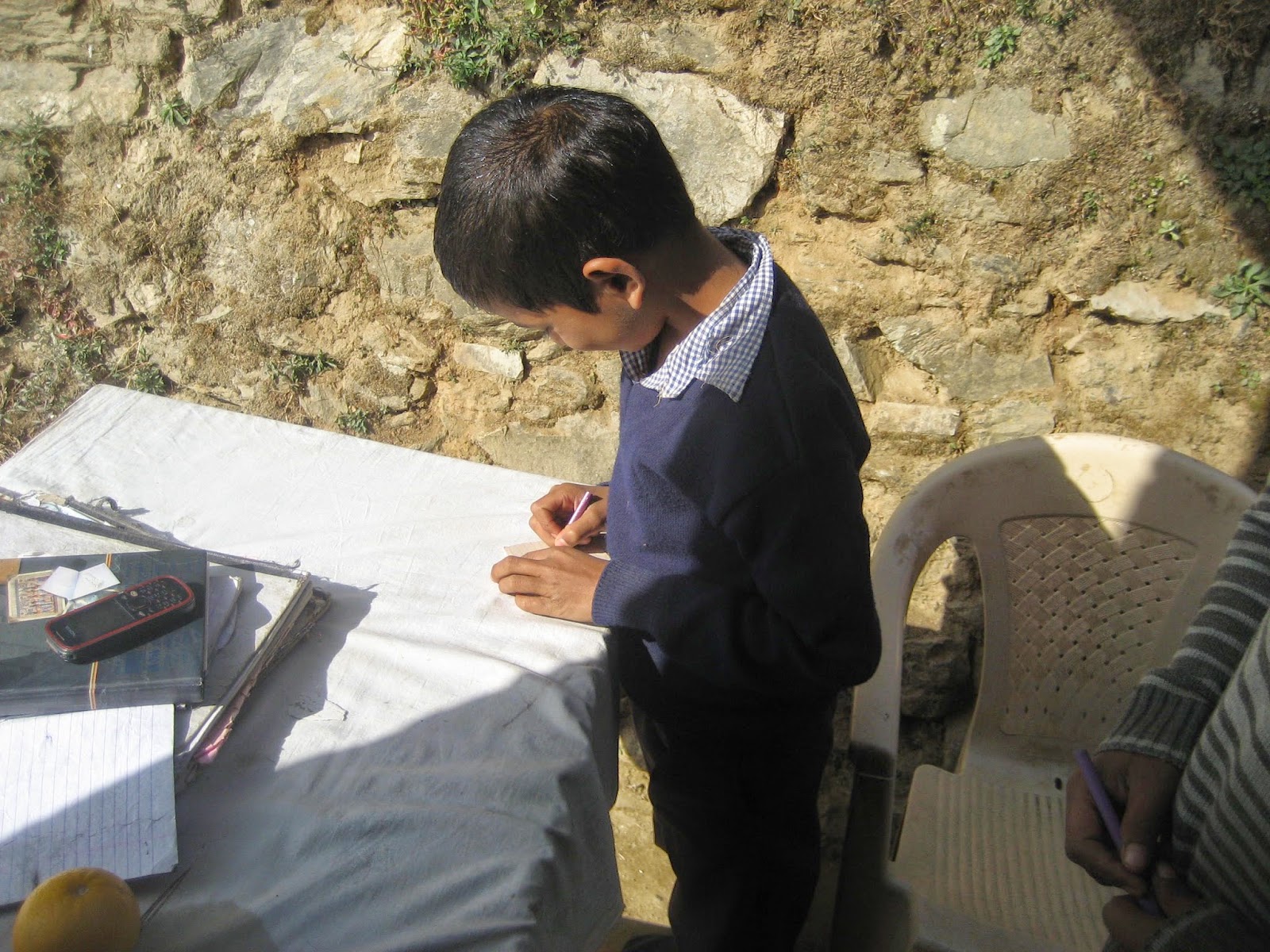 |
| A student giving his campaign speech |
Last December Atul was back at Jeevanshala school in village Maram in the Himalayas. Earlier, in July ’14, Atul had introduced project-based learning and grade 4 and 5 students had visited a local ‘naula’ (traditional water source) and created a newspaper based on their findings (see our earlier FB posts). Atul was pleasantly surprised that the students had since created half-a-dozen newspapers on different topics.
This time the focus was on encouraging the students to become aware citizens of a democracy and get them to think more about their school and education – how it is different, what is the purpose, what and how they learn…
Their teacher Sandeep explained to the students how a village Panchayat works. How the villagers vote for their village representatives or panch, how these members then elect their leader or Sarpanch, how a village meeting or Gram Sabha is called where anyone living in the village can participate and raise any issue they are concerned about. How these issues are then deliberated, voted upon and communicated to the Block Development Office (BDO), who is the local representative of the State government. Children learnt all this through role-play!
Grade 4 and 5 students together became village Jeevanshala and some of them decided to stand for elections to represent their village. They prepared their speeches and campaigned about what they would do for their village (i.e. their school) if they got elected. Students made ballot papers with all the names of candidates and lined up to vote. They had a pen mark put on their index finger once they had voted to simulate the real experience of voting in India. The votes were then counted with each ballot paper shown to the losing candidates. Results were declared and Jeevanshala gram panchayat was constituted. This was followed by election of the Sarpanch.
A Gram Sabha (general meeting of all the villagers/students) was called where students voiced issues of concern – leaking water pipe in their school water tank, need for more school stationery, more books, sports equipment etc. These issues were put to vote and the Sarpanch then presented the most important issues to the BDO, which was played by Sandeep!
An interesting aside of the Gram Sabha was a big discussion on the Ration Cards that are issued by Government of India based on who is above and below the poverty line and what category is eligible for what benefits. There is the APL or Above the Poverty Line card, BPL or Below the Poverty Line card and Antodaya or extreme poverty level card. By the end of the discussion the students probably knew more about eligibility and benefits of each card than most villagers! Atul learnt that village Maram is a ‘nirmal gaon’ because every house in the village has a toilet (no open defecation)!
To explain the nuances of their school the students, along with Sandeep, composed a school song. You can view this song and other videos on Jeevanshala YouTube channel http://bit.ly/jeevanshala (thank you Manan for creating this channel).
 |
| A student casting his vote |
 |
| Sandeep putting a pen mark on the right index finger of the student who cast his vote, to simulate voting in India |
